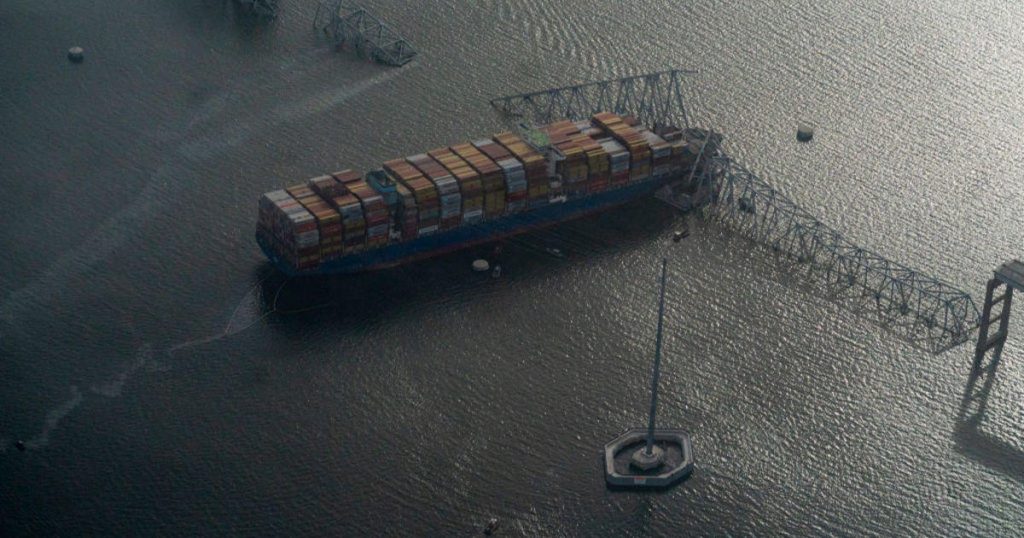Around 1:30 a.m. on Tuesday, the Francis Scott Key Bridge in Baltimore collapsed after a cargo ship called the Dali lost power and crashed into it. The ship had been moving through the Patapsco River when it veered off course towards the bridge. Despite efforts to deploy an anchor, the ship was unable to stop or change course, eventually hitting a column of the bridge. Officials were able to prevent cars from driving onto the bridge just before the accident, but unfortunately, eight construction workers who were filling potholes on the bridge plummeted into the river below. Several emergency responders and agencies, including the FBI, were involved in the search and rescue effort for the missing workers.
The events leading up to the bridge collapse began around 12:45 a.m. when the Dali, a Singaporean-flagged cargo ship, left the dock in Baltimore and started moving through the river. Tug boats, which are routinely used at the Port of Baltimore to assist ships, had already been cut loose when the crew of the Dali lost control of the vessel. Despite a mayday call made by the crew about a possible collision, the ship lost power and momentum, leading to the eventual crash into the bridge. Efforts were made to alert authorities and block traffic on the bridge, but the collapse still occurred, resulting in the tragic incident.
Following the bridge collapse, a search and rescue operation was initiated to locate the missing construction workers, who were all in their 30s and 40s and hailed from various countries such as El Salvador, Guatemala, Honduras, and Mexico. Two workers were recovered, with one being treated for injuries and later discharged from the hospital. Maryland officials held a series of news conferences to provide updates on the search efforts and the status of the missing workers. Governor Wes Moore and Transportation Secretary Pete Buttigieg both pledged to work with federal agencies like the NTSB and Coast Guard to investigate the incident and ensure support for fixing the bridge.
As search and rescue efforts continued throughout the day, it was decided to transition to recovery operations in the evening when six workers were still missing and presumed dead. Vigils were held for the workers, and information about their identities and backgrounds began to emerge. According to reports, the missing workers were described as hard-working and humble men with families. Divers were scheduled to go back into the water the following day to aid in the recovery efforts. The Mexican Embassy, Guatemalan ministry, and Honduran official sources confirmed the nationalities of some of the missing workers, highlighting the diverse origins of the construction crew.
Despite the tragic outcome and loss of life, the investigation into the incident remains a top priority for officials. The National Transportation Safety Board (NTSB) is leading the investigation to determine the cause of the ship’s loss of power and subsequent collision with the bridge. While details about the sequence of events leading up to the collapse were provided by witnesses and responders, further analysis and examination will be carried out to prevent similar accidents in the future. With federal support pledged by President Biden and other officials, the focus remains on providing assistance to the affected families and communities, as well as ensuring the structural integrity and safety of the Francis Scott Key Bridge.















